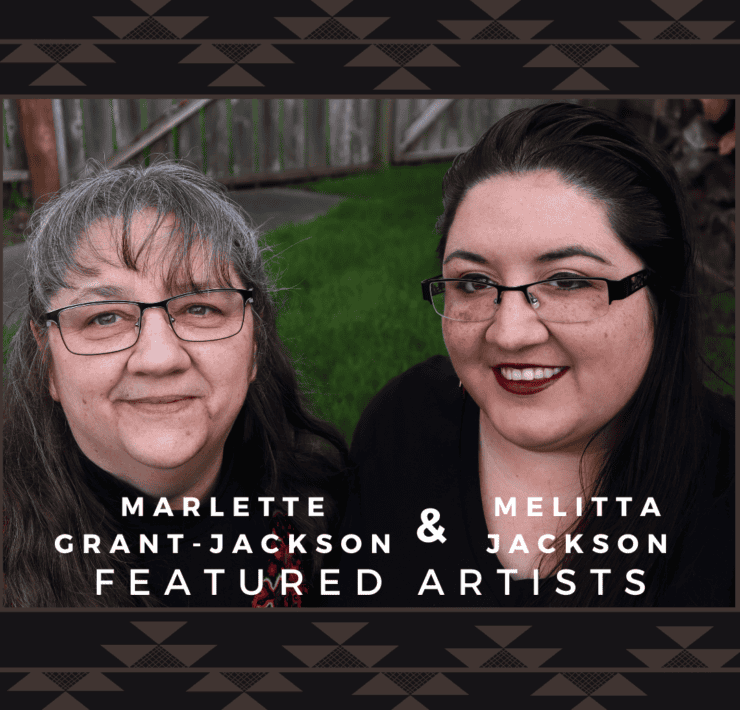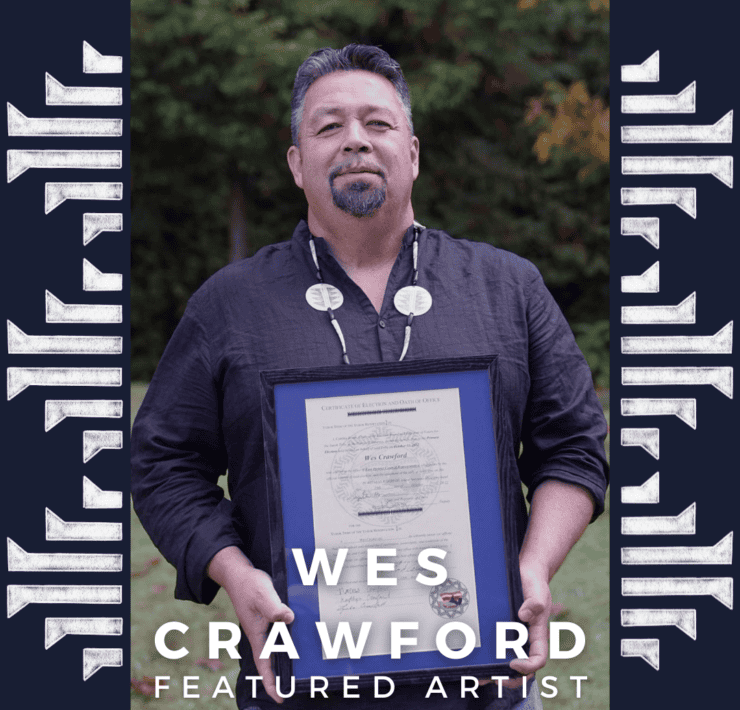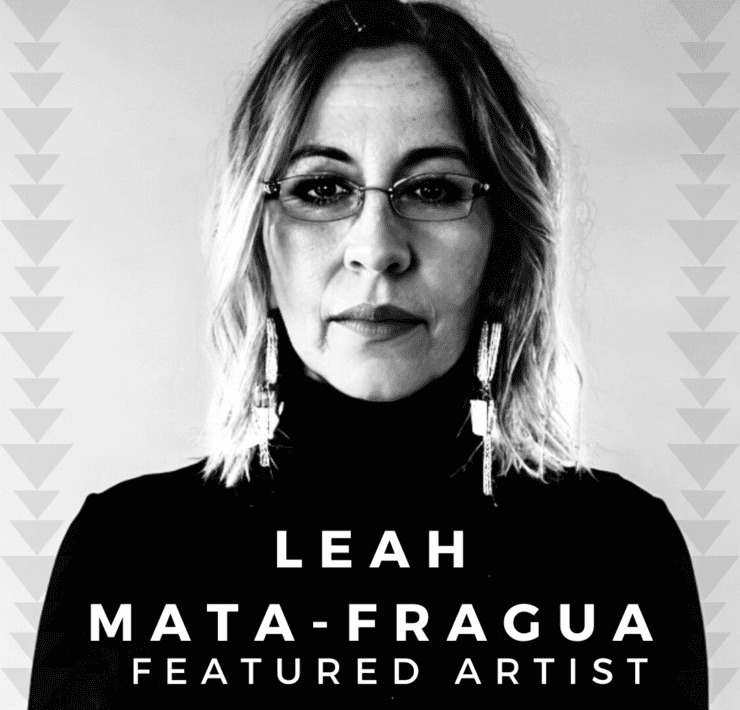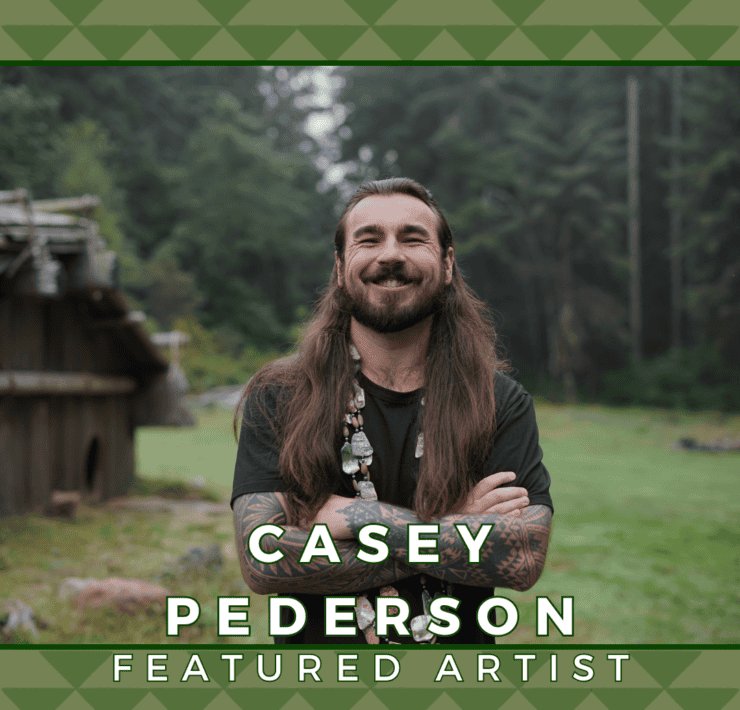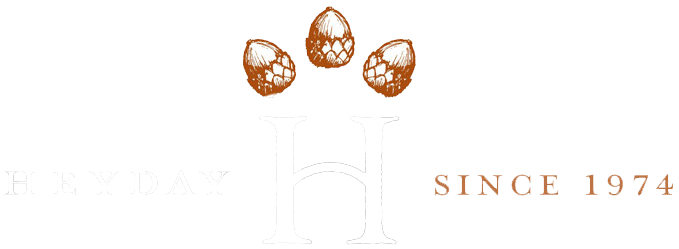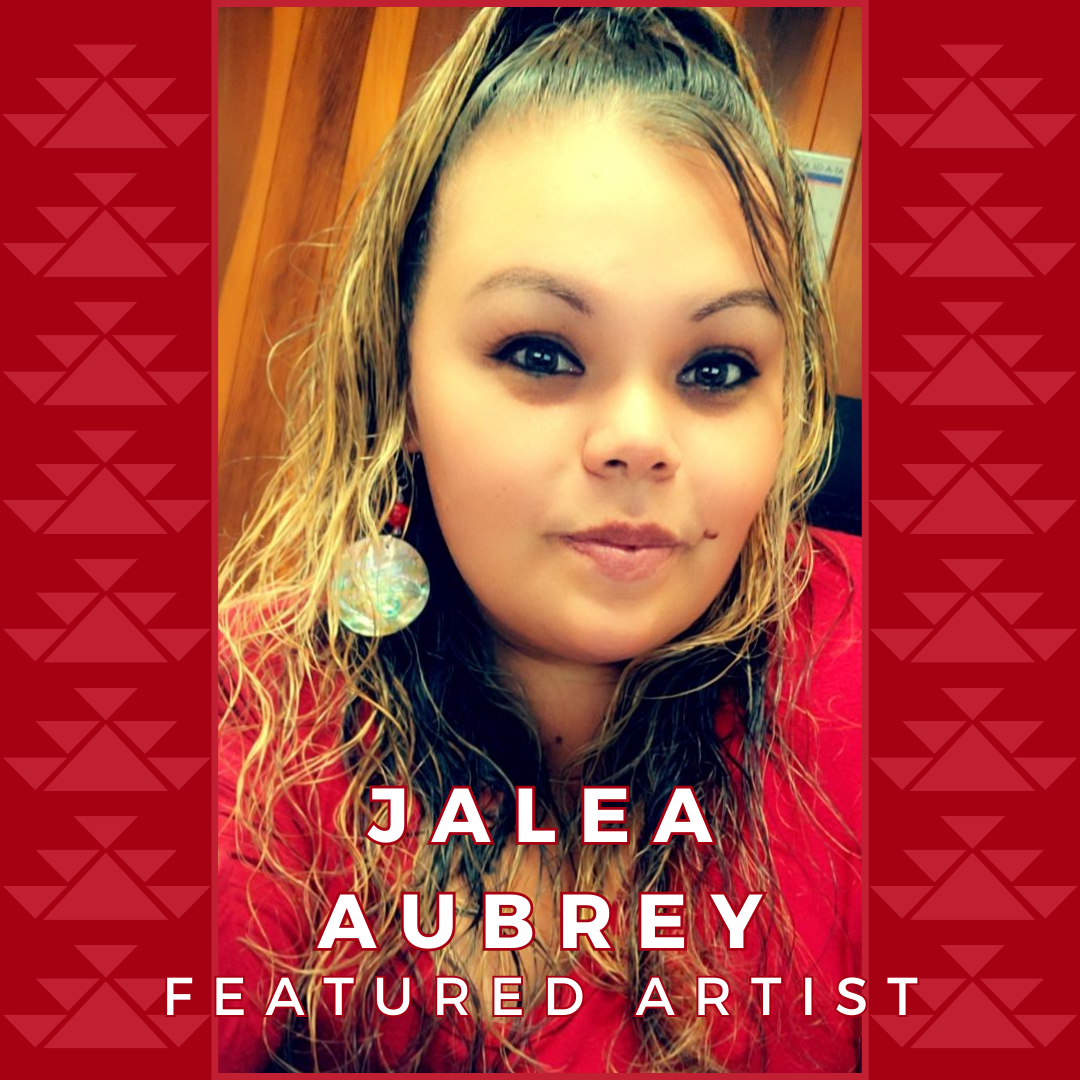
by Tavi Lorelle Carpenter
Meet this week’s featured artist, Jalea Aubrey, maiden name Walker. Jalea is of Tolowa and Yurok descent and a tribal citizen of Tolowa Dee-ni’ Nation. She grew up in Hoopa, CA with her mother Jolanda Ingram-Obie and step-father a’wok Richard Marshall Jr. Her artistry is in beading and the making of traditional Tolowa and Yurok jewelry and regalia. Coming from a dance family, she hails from a long line of dance leaders and regalia makers. Jalea first started learning how to make regalia at the age of eight from her Yurok Grandmother a’wok Janice Cooper-Tripp.
“She taught me almost everything I know and she was a big mentor to a lot of different people. She taught a lot of different people how to do our traditional arts, foods or all of it. Like the dance leaders would even go to her for Acorn Soup. I also learned how to do that from her.”
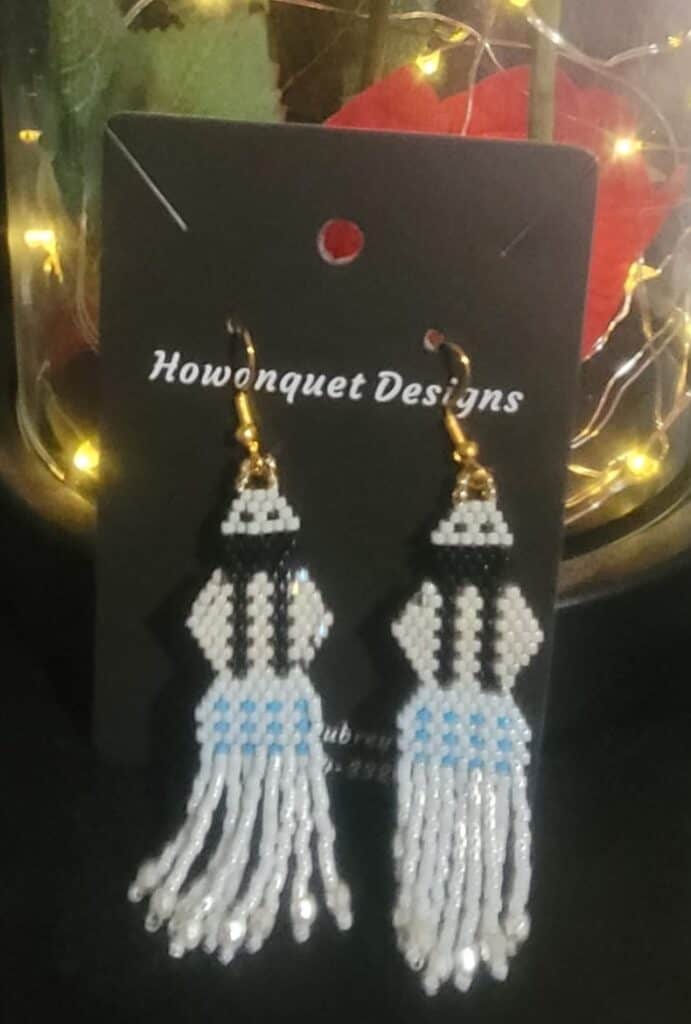
Jalea had other mentors supporting her artistry as well, such as her step-father, an artist himself whose artwork can be seen at the K’ima:w Medical Center in etched glass.
“All the windows on the front and back of the [K’ima:w Medical Center] are etched glass of all his drawings, but they have native people and traditional houses and woodpeckers, He taught me a lot about the art of it, the drawings, so nowadays I try to incorporate that into my beadwork. I’ll bead woodpeckers and I’ll bead [traditional basket] designs.”
Jalea also mentioned her children as being a driving force of inspiration, highlighting the importance of continuing the passage of traditional knowledge.
“There’s quite a few people that help me do what I do, especially my children. I want my culture to stay alive and they are my future. So, I try to make sure that they know how to do things. I also taught other kids while working at Castle Rock Charter School here in Crescent City. I am now a Kindergarten teacher and during November, during Native American month I taught my students about the local tribes and taught them how to bead a necklace. I will teach any kid that wants to learn, I try to make sure they are able to learn our culture.”
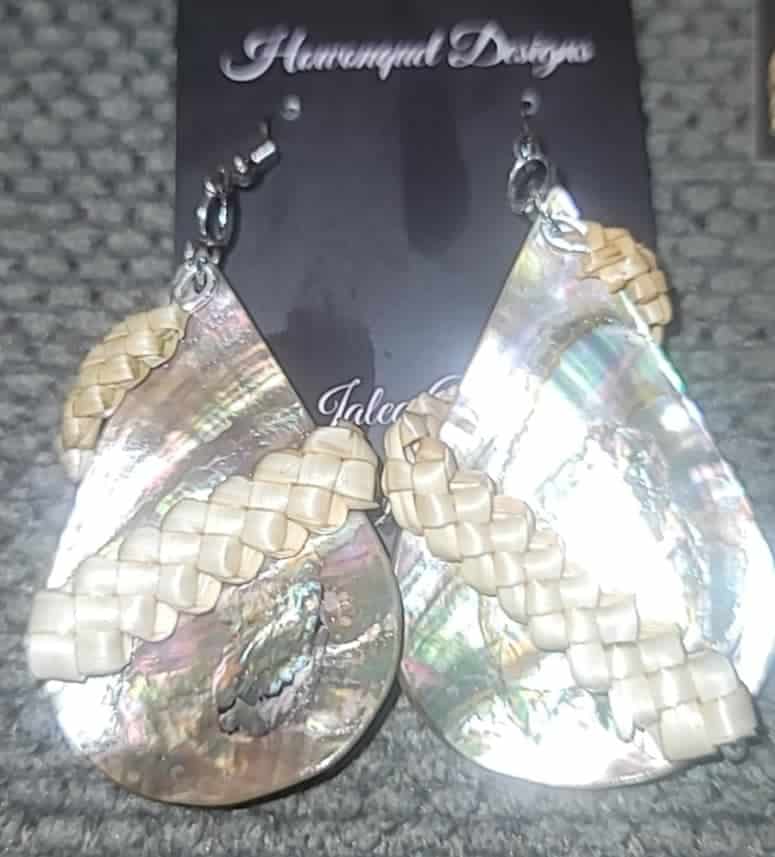
Jalea’s commitment to the intergenerational sharing, seemed to stem from healing fracturing that occurred in her own family due to the violent oppression of settler-colonialism. Jalea is certainly part of that process of gaining back what was taken, not only for herself, her children and the next generation but as a way of honoring those who did not have that opportunity.
“My tribe, the Tolowas were massacred, so a lot of [cultural knowledge] was lost, but not all the way lost. There’s some people that know how to do it. But the big thing was boarding schools and how they weren’t allowed to do it. I think that was my number one drive [because] my [Tolowa] Grandma a’wok Frances Lopez didn’t know how to do any of it. I look at old pictures and she was so dark and short and just a straight up [Tolowa woman]. She shared so many stories of abuse, [both] mental and physical from boarding school. She was kind of set in her ways after all of it. My mom was raised in Portland and so my mom didn’t even get to really know [her] culture. When she moved me to Hoopa, I learned from my step family and the people I had around me. It was really lost in my family. Like we went from being traditional dance leaders to [their being] a lot of people don’t know how to do anything anymore. Recently our younger generation has been working to get it back.”
Jalea honors the past with the understanding that, as she shares with her children, when it comes to traditions: “that’s the importance of our people coming together and keeping what we [have] alive.”

Jalea’s process begins with first and foremost, connecting to feeling and praying for guidance.
“You’ve got to feel it! It’s something that just comes into your spirit and you feel it. Or I’ll tell you-I had a dream a couple of weeks ago about songs. My daughter’s been wanting to learn songs and she wants to dance and sing. I had a dream come to me and it was song [repeating] in the dream, elders that I didn’t know kept singing it to me, and asking if I would remember. It was like a connection to my ancestors. That song, to me, sounded so old and it sounded traditional, I knew it was a song being given to me for my daughter to sing, so that’s how I get my regalia stuff. You pray about it, you burn your injun root, your Angelica root, and it comes to you! It sounds crazy, but it’s real.”
As Jalea explains, this goes back to the truth of all things having a spirit.
“All living things have a spirit such as animals and the wildlife and the trees and nature and. I like to incorporate that into my work because it means something. It’s got its own spirit and it connects us to our world and who we are. Everything has a purpose.”
In this way, it becomes clear that reconnecting with these traditional ways of creating actively ties back to ontological frameworks of viewing the world, also known as native ways of knowing.
Jalea gave an example with bear grass:
“One of my favorite things to work with is bear grass because it’s a purity, it symbolizes purity. And the bear grass being on our traditional dance dresses, bear grass hangs on, [it] dangles and it’s cleaning out the dance floor, the dance pit where we’re dancing. It’s cleaning out the bad spirits. And I feel like [when I wear] wearing bear grass, it’s revitalizing and it clears out the negativity. And I like to do a lot of jewelry with bear grass.”

Her artistry is also a community endeavor with her father Duane Walker gathering wood for hair pins or her family helping her gather bear grass. With her children, this allows her the ability to share with them their cultural practices and values.
Jalea explains:
“The gathering of the bear grass is a whole family [practice] for my small family, my husband, my father and my two kids, sometimes my niece and brother will come along as well. It’s a way to teach my kids their culture and the meanings of things and be able to carry it on in the future when I’m not here.”
With pride Jalea added: “ My daughter is already a little artist, too. She’s already learning everything that I know and sometimes surpassing me on things. Recently we have been working on her next ceremonial dress.”
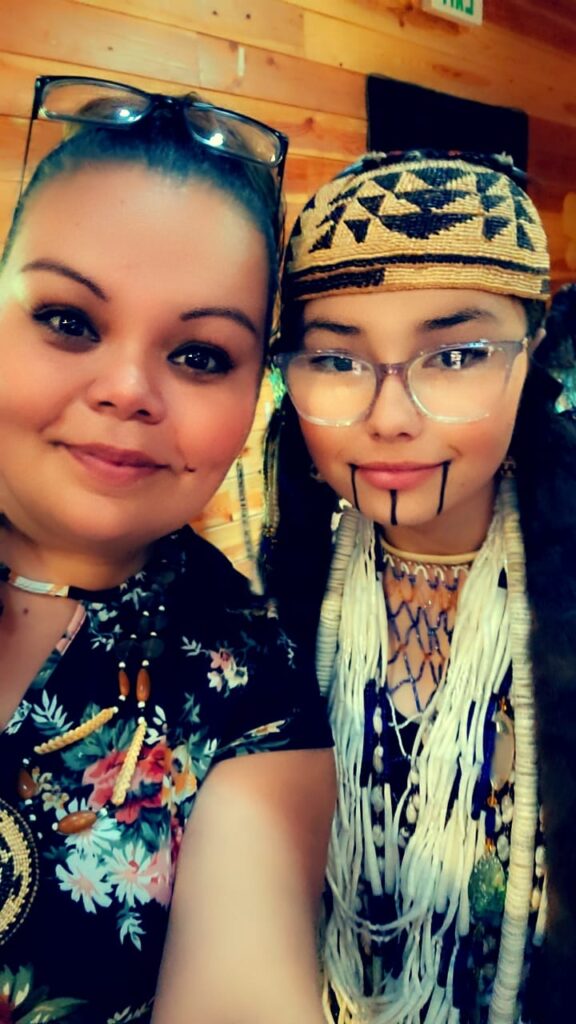
Jalea’s words of wisdom echoed much of what she had already shared with me, the importance of sharing. Hoarding this information is unhelpful because it is necessary for the future and as she astutely puts it, “we’re not going to be here forever!”
“If there’s a Native child who wants to learn, you teach them.” She told me firmly.
For Jalea, I felt as though her commitment to sharing is so driven by her astute understanding of how healing traditional practices are, not only for self but for one’s community. In some ways, it could also be said that this is a way of honoring our elders and ancestors who were denied that opportunity.
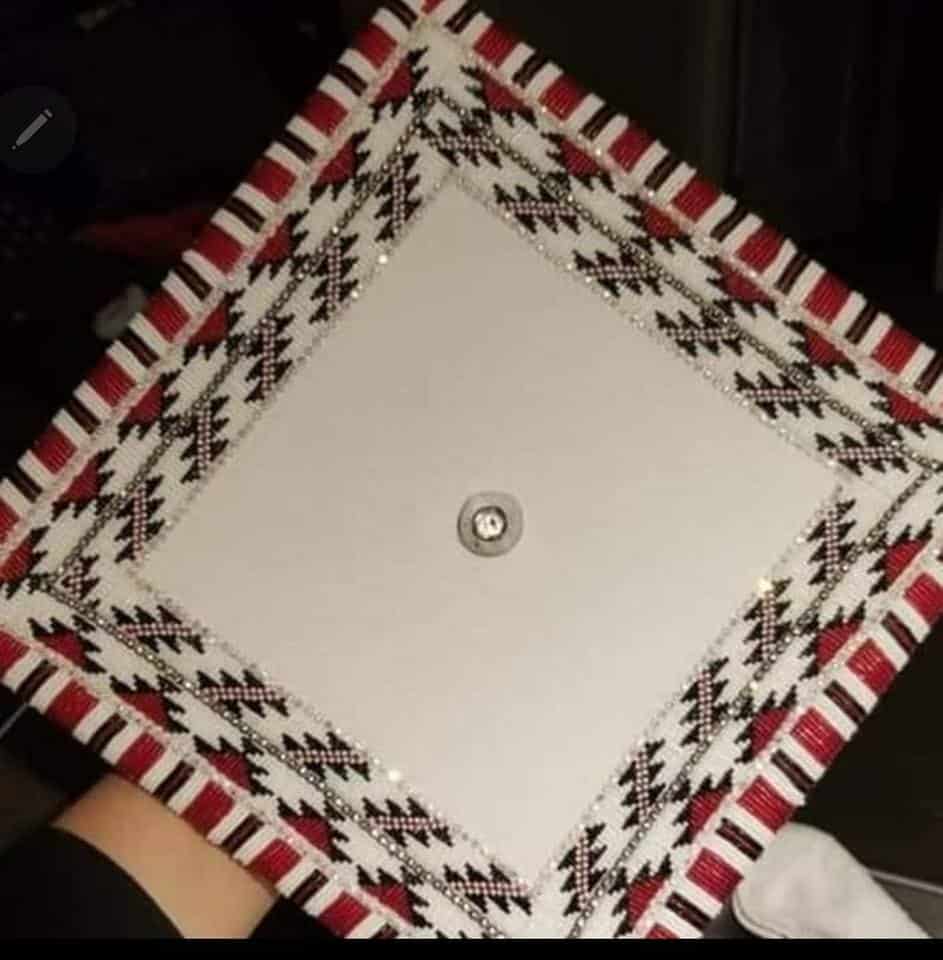
But Jalea shared it best in explaining exactly why this mattered to her:
“Our culture has been lost for so long, it’s time to regain it back and stay strong in our culture, to keep it going into the future. Not only do our kids need to learn our culture, but the whole community does as well. It’s cultural sharing, and they need to know who we are as Native American people. I feel like all people should understand who we are, and know about our culture because we were the first peoples here.”
Well put, Jalea!
It takes a community!
You can support Jalea by visiting her online store: Howonquet Designs on Facebook.




